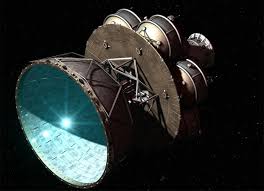Types of Civilizations in the Universe.
Introduction:
The universe is a vast and mysterious expanse, filled with countless stars, galaxies, and planets. Among the many fascinating aspects of the cosmos, the existence of intelligent life beyond Earth has captivated the human imagination for centuries. The concept of civilizations flourishing on distant planets has been a topic of scientific speculation and philosophical pondering. In our quest to understand the potential diversity of life in the universe, scientists have proposed various classifications for different types of civilizations. This article will explore some of the prominent categorizations, shedding light on the possible forms of intelligent life that may exist beyond our home planet.
Type I Civilization: Planetary Civilization
A Type I civilization is a hypothetical civilization that has achieved mastery over the resources and energy of its home planet. In this stage, a civilization is capable of harnessing and utilizing the entire energy output of its planet, including solar, geothermal, and other renewable sources. They have advanced technology and infrastructure, controlling and manipulating natural phenomena like earthquakes, weather patterns, and harnessing the power of their local star.Currently, humanity is estimated to be at around 0.73 on the Kardashev scale, still considered a Type 0 civilization, as we rely primarily on fossil fuels and have not yet harnessed the full potential of our planet's energy resources.
Type II Civilization: Stellar Civilization
A Type II civilization is one that has advanced to the point of harnessing the entire energy output of its host star. They have developed Dyson spheres or similar megastructures to capture and utilize the energy radiated by their sun. Such a civilization would have a significantly higher level of technological sophistication, capable of colonizing multiple planets within their own solar system, and even modifying their environment to suit their needs.
Type III Civilization: Galactic Civilization
A Type III civilization is a truly awe-inspiring concept, representing a civilization that has expanded its influence and control over an entire galaxy. They would have harnessed the energy output of billions of stars and colonized a vast number of planetary systems. The resources available to a Type III civilization would be unimaginable to us, and their technology would likely be far beyond our current comprehension.Beyond the Kardashev Scale:
While the Kardashev scale provides a useful framework for categorizing civilizations based on their energy consumption, other proposed classifications delve into different aspects of advanced civilizations. Some of these categorizations include:
1. Civilizations based on communication: This classification focuses on the mode of communication and information exchange among advanced civilizations. It explores the possibility of civilizations using various forms of communication, including electromagnetic waves, neutrinos, gravity waves, or even forms of communication yet unknown to us.
2. Civilizations based on biology: This classification contemplates civilizations that have evolved beyond our current biological form. It considers the possibility of civilizations existing as advanced forms of artificial intelligence, sentient machines, or even non-physical entities.
3. Civilizations based on dimensions: This classification speculates on civilizations that have transcended our three-dimensional reality. These civilizations might have access to additional spatial dimensions, enabling them to manipulate space, time, and potentially traverse vast distances in an instant.
Conclusion:
As we continue to explore the vastness of the universe, the study of different types of civilizations offers intriguing insights into the potential diversity of intelligent life beyond Earth. While our understanding is still limited and speculative, these categorizations stimulate our imaginations and encourage us to ponder the vast possibilities that the cosmos may hold. The search for extraterrestrial intelligence and the exploration of distant worlds remain fundamental endeavors for humanity, as they allow us to contemplate our place in the grand tapestry of the universe.















































